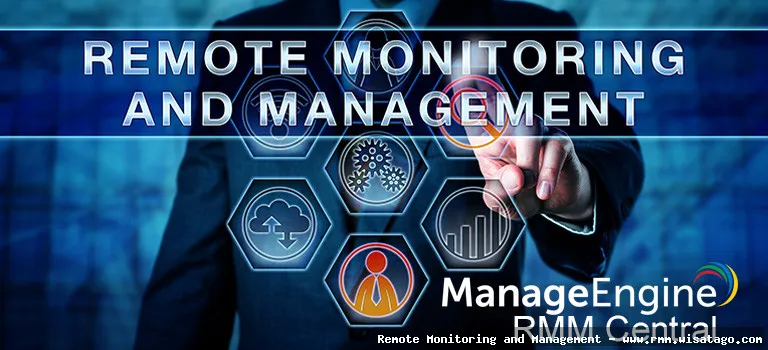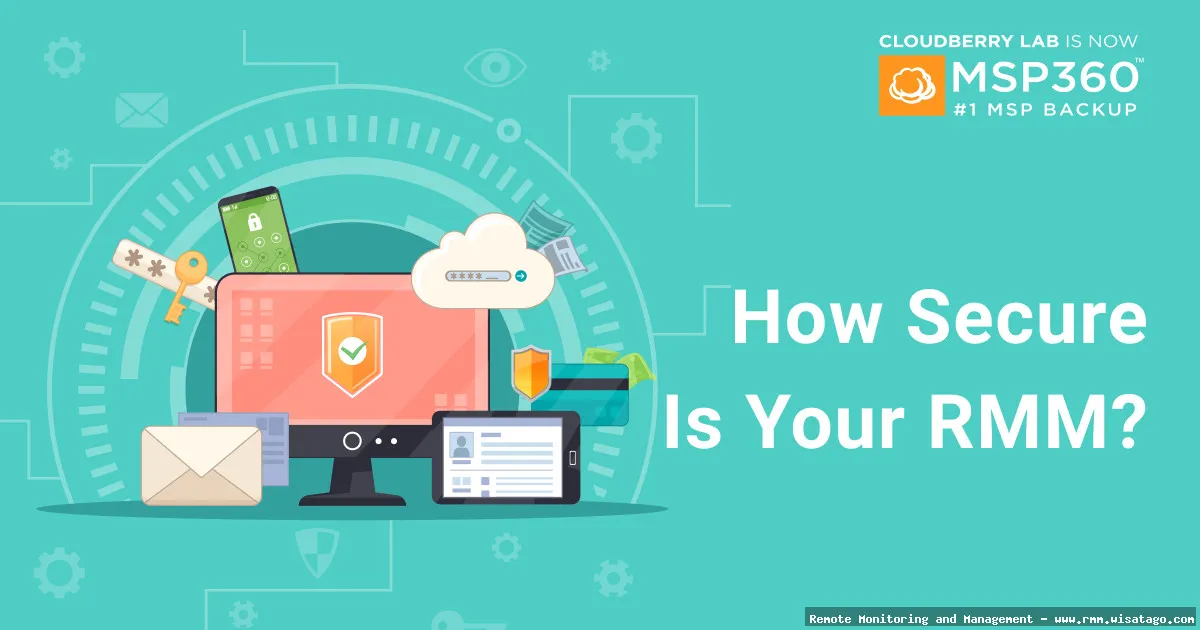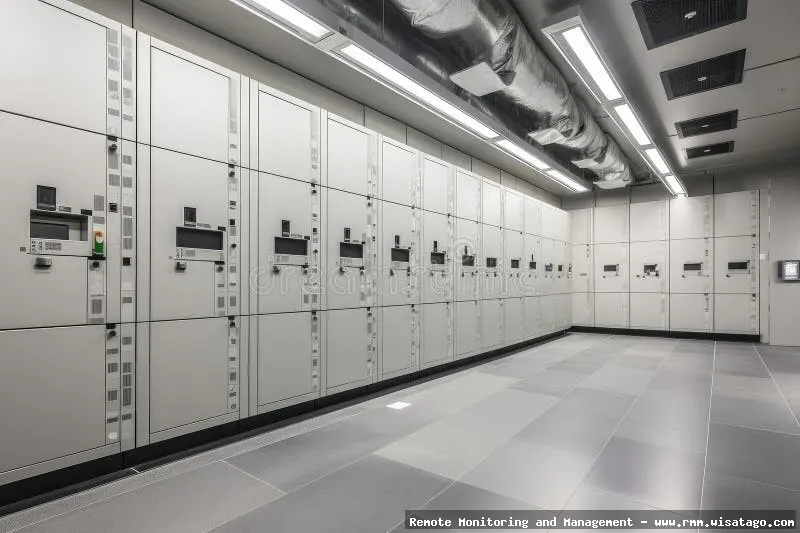In today’s complex IT landscape, Remote Monitoring and Management (RMM) platforms have become indispensable tools for Managed Service Providers (MSPs) and internal IT departments alike. These platforms allow for proactive monitoring, maintenance, and management of IT infrastructure from a central location, regardless of where the endpoints are physically located. However, as reliance on RMM platforms grows, so does the potential attack surface. A compromised RMM platform can provide attackers with widespread access to numerous client environments, making security a paramount concern. That’s where advanced security features come into play.
Gone are the days when basic antivirus and patch management were sufficient to secure an RMM platform. Modern RMM solutions now incorporate a layered security approach, incorporating everything from robust authentication mechanisms to sophisticated threat detection and response capabilities. This comprehensive security posture is crucial for protecting not only the RMM platform itself, but also the downstream clients and systems it manages. Without these advanced features, organizations risk becoming easy targets for sophisticated cyberattacks.

This article aims to provide a comprehensive guide to the advanced security features found in modern RMM platforms. We’ll explore the key components of a secure RMM solution, discuss the benefits of implementing these features, and delve into the challenges IT teams may face during implementation. By understanding these advanced security measures, MSPs and IT departments can make informed decisions when selecting and configuring an RMM platform to effectively protect their clients and organizations from evolving cyber threats.
Authentication and Access Control
Strong authentication and granular access control are the foundation of any secure RMM platform. These features ensure that only authorized personnel can access the platform and that they only have the necessary permissions to perform their job functions. Think of it like the gatekeepers of your entire IT kingdom; without proper gatekeepers, anyone can waltz in and wreak havoc.
Multi-Factor Authentication (MFA)
Multi-Factor Authentication (MFA) adds an extra layer of security beyond just a username and password. It requires users to provide a second form of verification, such as a code from a mobile app, a biometric scan, or a hardware token. This significantly reduces the risk of unauthorized access, even if a password is compromised. In real-world scenarios, MFA can prevent attackers from gaining access to the RMM platform using stolen credentials obtained through phishing attacks or data breaches. Imagine the headache you save by simply enabling this feature!
Role-Based Access Control (RBAC)
Role-Based Access Control (RBAC) allows administrators to define specific roles and permissions for different users within the RMM platform. For example, a technician might have access to remotely control endpoints but not to modify system settings or create new user accounts. This principle of least privilege helps to minimize the potential damage that a compromised user account can cause. RBAC ensures that users only have access to the resources they need to perform their jobs, limiting the blast radius in case of a security breach. Think of it as giving your employees the right keys for the right doors, and nothing more.
Conditional Access Policies
Conditional access policies go a step further by granting or denying access based on specific conditions, such as the user’s location, device type, or network. For instance, you could configure the RMM platform to require MFA only when a user is accessing it from outside the corporate network. This provides an extra layer of security without inconveniencing users who are working within a trusted environment. Consider setting up a policy that blocks logins from countries you don’t do business with; it’s a simple yet effective way to prevent potential attacks.
Endpoint Security Integration
Modern RMM platforms often integrate with endpoint security solutions to provide a unified view of security posture and streamline incident response. This integration allows IT teams to manage and monitor endpoint security tools directly from the RMM console, simplifying security management and improving threat detection capabilities. Implementing effective IT management strategies can often involve specialized software, RMM which offers a comprehensive suite of tools for monitoring and maintaining systems
.
Antivirus and Anti-Malware Management
RMM platforms can be used to deploy, manage, and monitor antivirus and anti-malware software on all managed endpoints. This includes scheduling scans, updating virus definitions, and responding to detected threats. The centralized management capabilities of an RMM platform ensure that all endpoints are adequately protected and that security policies are consistently enforced. It’s like having a central command center for your endpoint security, allowing you to quickly identify and address any vulnerabilities.

Endpoint Detection and Response (EDR) Integration
Endpoint Detection and Response (EDR) solutions provide advanced threat detection and response capabilities, including behavioral analysis, threat intelligence, and automated remediation. Integrating EDR with an RMM platform allows IT teams to quickly identify and respond to sophisticated threats that might bypass traditional antivirus software. This integration provides enhanced visibility into endpoint activity and enables proactive threat hunting. Imagine being able to see exactly what a piece of malware is doing on an endpoint and automatically contain it before it can cause any damage.
Patch Management
Keeping software up-to-date is crucial for preventing security vulnerabilities. RMM platforms provide robust patch management capabilities, allowing IT teams to automatically deploy security patches to all managed endpoints. This helps to ensure that systems are protected against known vulnerabilities and that security policies are consistently enforced. A well-managed patch management system is like having a shield that constantly adapts to protect against new threats.
Network Security Monitoring
While endpoint security is critical, monitoring network traffic and security events is equally important for detecting and preventing cyberattacks. Modern RMM platforms often include network security monitoring capabilities or integrate with network security tools to provide a holistic view of the security landscape.
Intrusion Detection and Prevention Systems (IDS/IPS) Integration
RMM platforms can integrate with Intrusion Detection and Prevention Systems (IDS/IPS) to monitor network traffic for malicious activity. This integration allows IT teams to quickly identify and respond to network-based attacks, such as malware infections, denial-of-service attacks, and unauthorized access attempts. Think of it as having a security guard watching the front door of your network, alerting you to any suspicious activity.
Firewall Management
RMM platforms can be used to manage and monitor firewalls on managed networks. This includes configuring firewall rules, monitoring firewall logs, and responding to security alerts. The centralized management capabilities of an RMM platform ensure that firewalls are properly configured and that security policies are consistently enforced. A well-configured firewall is like having a strong barrier that prevents unauthorized access to your network.
Security Information and Event Management (SIEM) Integration
Security Information and Event Management (SIEM) systems collect and analyze security logs from various sources, including endpoints, servers, and network devices. Integrating SIEM with an RMM platform allows IT teams to gain a comprehensive view of the security landscape and to quickly identify and respond to security incidents. This integration provides enhanced threat detection and incident response capabilities. Imagine being able to correlate security events from different sources to identify complex attacks that might otherwise go unnoticed.
Data Protection and Compliance
Protecting sensitive data and complying with regulatory requirements are essential for all organizations. Modern RMM platforms offer features to help IT teams protect data and meet compliance obligations.

Data Encryption
RMM platforms can be used to enforce data encryption on managed endpoints and servers. This helps to protect sensitive data from unauthorized access, even if a device is lost or stolen. Encryption is like putting your data in a safe, ensuring that only authorized individuals can access it. Data at rest and in transit must be encrypted to prevent data breaches.
Data Loss Prevention (DLP)
Data Loss Prevention (DLP) solutions help to prevent sensitive data from leaving the organization’s control. RMM platforms can integrate with DLP solutions to monitor data transfers and to block unauthorized attempts to copy or transmit sensitive information. This helps to prevent data breaches and to comply with data privacy regulations. DLP is like having a watchful eye that prevents sensitive data from leaving your organization without authorization.
Backup and Disaster Recovery
RMM platforms often include backup and disaster recovery capabilities to ensure that data can be recovered in the event of a system failure or a security incident. This includes regularly backing up data, testing backups, and providing a rapid recovery process. A robust backup and disaster recovery plan is like having a safety net that protects your organization from data loss.
Security Auditing and Reporting
Regular security audits and reporting are essential for identifying vulnerabilities and ensuring that security policies are being followed. Modern RMM platforms provide robust auditing and reporting capabilities to help IT teams monitor security posture and demonstrate compliance.
Security Log Monitoring
RMM platforms can be used to collect and analyze security logs from various sources, including endpoints, servers, and network devices. This allows IT teams to identify suspicious activity and to investigate security incidents. Security log monitoring is like having a detective that investigates every security event to identify potential threats.
Compliance Reporting
RMM platforms can generate reports to demonstrate compliance with regulatory requirements, such as HIPAA, PCI DSS, and GDPR. These reports provide evidence that security policies are being followed and that data is being protected. Compliance reporting is like having a lawyer that can demonstrate that your organization is meeting its legal obligations.
Vulnerability Scanning
Some RMM platforms include vulnerability scanning capabilities to identify security weaknesses in managed systems. This allows IT teams to proactively address vulnerabilities before they can be exploited by attackers. Vulnerability scanning is like having a doctor that checks your systems for any health problems.

Challenges in Implementing Advanced Security Features
While advanced security features offer significant benefits, implementing them can also present challenges for IT teams.
Complexity
Implementing and managing advanced security features can be complex, requiring specialized knowledge and expertise. IT teams may need to invest in training or hire specialized personnel to effectively manage these features. Understanding the nuances of each security feature and how they interact with each other is crucial for successful implementation.
Cost
Advanced security features can add to the cost of an RMM platform. IT teams need to carefully evaluate the cost-benefit ratio of these features to determine whether they are worth the investment. Consider the potential cost of a data breach versus the cost of implementing advanced security measures.
Integration
Integrating advanced security features with existing IT infrastructure can be challenging. IT teams need to ensure that these features are compatible with their existing systems and that they do not interfere with business operations. Thorough testing is essential before deploying any new security features.
Performance Impact
Some advanced security features can have a negative impact on system performance. IT teams need to carefully monitor performance and to optimize security settings to minimize any impact. Striking the right balance between security and performance is crucial for maintaining productivity.
Conclusion
Advanced security features in modern RMM platforms are essential for protecting organizations from evolving cyber threats. By implementing strong authentication, endpoint security integration, network security monitoring, data protection measures, and security auditing capabilities, IT teams can significantly reduce their risk of a security breach. While implementing these features can present challenges, the benefits far outweigh the risks. Choosing the right RMM platform with the appropriate security features is a critical decision for any organization that relies on remote management of its IT infrastructure. Remember to prioritize a layered security approach and to continuously monitor and adapt your security posture to stay ahead of emerging threats. In the ever-changing landscape of cybersecurity, vigilance and proactive security measures are your best defense.
Conclusion
In conclusion, modern RMM platforms have evolved significantly, incorporating advanced security features that are crucial for protecting managed endpoints and networks in today’s threat landscape. From robust endpoint detection and response (EDR) capabilities and sophisticated vulnerability management to proactive threat intelligence integration and comprehensive patch management, these platforms provide a multi-layered defense against increasingly sophisticated cyberattacks. These advancements are no longer optional; they are essential for MSPs and IT professionals aiming to deliver secure and reliable IT services.
As threats continue to evolve, staying informed and proactive is paramount. Understanding and implementing these advanced security features within your RMM platform is a critical step in safeguarding your clients and your own business. We encourage you to thoroughly evaluate your current RMM solution and consider exploring options that offer the most comprehensive security capabilities. Learn more about enhancing your security posture by visiting our resource page on RMM Security Best Practices and taking the necessary steps to fortify your defenses against the ever-present threat of cybercrime.
Frequently Asked Questions (FAQ) about Advanced Security Features in Modern RMM Platforms
How can I use an RMM platform’s endpoint detection and response (EDR) integration to proactively protect my clients from advanced threats like ransomware?
Modern RMM platforms are increasingly integrating with endpoint detection and response (EDR) solutions to offer proactive threat protection. This integration allows for real-time monitoring of endpoints for malicious activity. EDR goes beyond traditional antivirus by analyzing endpoint behavior, identifying suspicious patterns, and automatically responding to threats. For instance, if ransomware is detected attempting to encrypt files, the EDR can isolate the affected endpoint, terminate the malicious process, and even roll back changes to prevent data loss. By leveraging EDR integration within your RMM, you gain centralized visibility and control over security incidents, enabling faster response times and minimizing the impact of advanced threats like ransomware. Furthermore, many EDR solutions provide detailed forensic analysis to understand the root cause of the attack and prevent future occurrences.
What is multi-factor authentication (MFA) in RMM platforms, and how does enabling it improve the overall security posture of my managed service provider (MSP)?
Multi-factor authentication (MFA) adds an extra layer of security to RMM platform access by requiring users to provide multiple verification factors before granting access. Typically, this involves something you know (password), something you have (a code from an authenticator app or SMS), or something you are (biometrics). Enabling MFA significantly improves an MSP’s security posture by making it much harder for attackers to gain unauthorized access, even if they have obtained a user’s password. Breached RMM accounts can lead to widespread compromises across client networks, making MFA a critical security control. By implementing MFA, you protect sensitive client data, prevent malicious software deployment, and reduce the risk of devastating security incidents. It acts as a crucial safeguard against credential stuffing, phishing attacks, and other common methods used by cybercriminals to target MSPs.
How do vulnerability scanning and patch management features within a modern RMM help me proactively identify and remediate security weaknesses across my client’s IT infrastructure?
Modern RMM platforms offer robust vulnerability scanning and patch management capabilities that are essential for proactive security. Vulnerability scanning identifies potential security weaknesses in software, operating systems, and network devices across your client’s IT infrastructure. These scans highlight missing patches, outdated software versions, and misconfigurations that could be exploited by attackers. The integrated patch management features then automate the process of deploying security updates and patches to address these vulnerabilities. By regularly scanning for vulnerabilities and promptly applying patches, you can significantly reduce the attack surface and minimize the risk of successful exploits. This proactive approach helps prevent data breaches, system downtime, and other security incidents, ensuring the ongoing security and stability of your client’s environment. Many RMMs also offer reporting on patch compliance, providing valuable insights into the overall security posture.